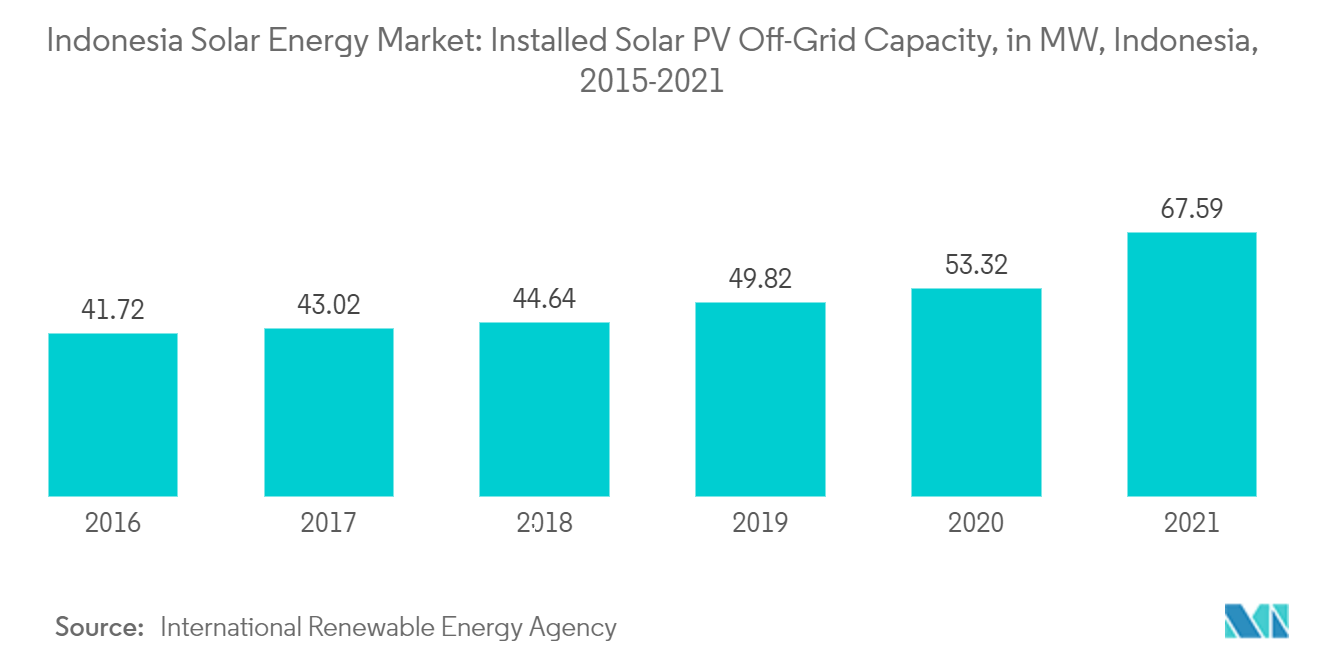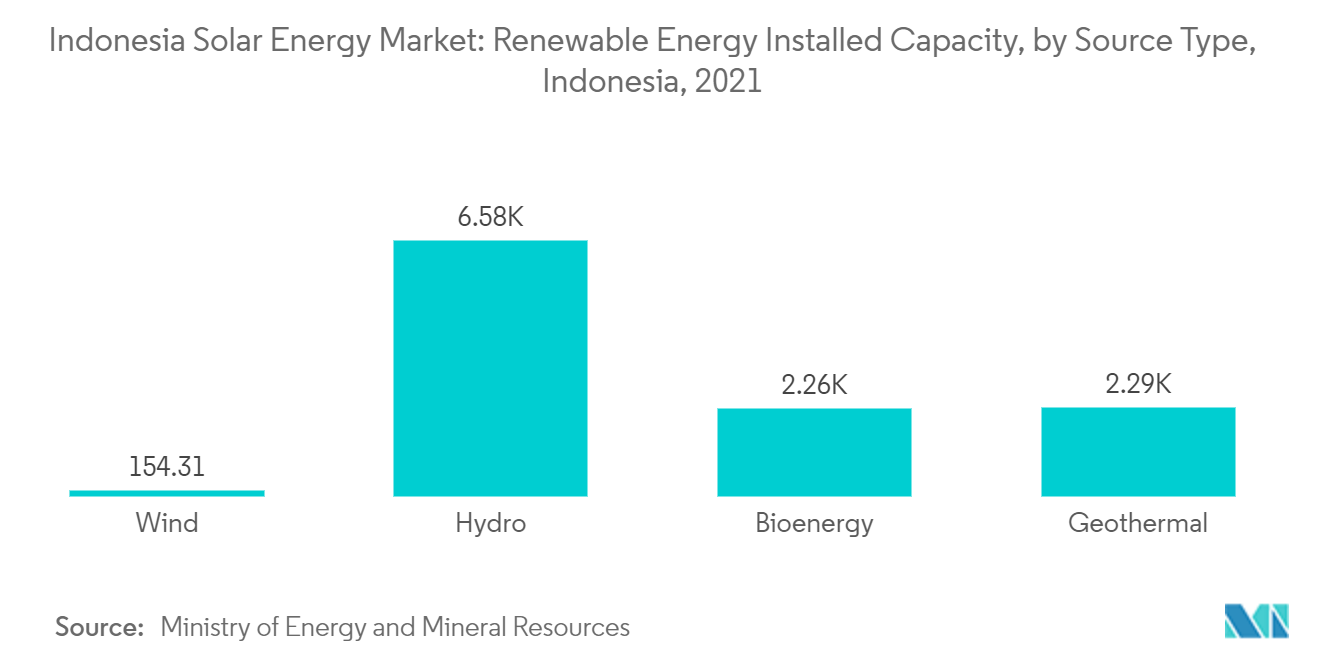Market Trends of Indonesia Solar Energy Industry
This section covers the major market trends shaping the Indonesia Solar Energy Market according to our research experts:
Off-Grid Segment Expected to Witness Significant Growth
- Indonesia is a populous country with a distinctive terrain, having over 17,508 islands. The distributed topography of the country poses a substantial difficulty to the country's power sector. Around 40% of off-grid regions are primarily located outside Java island and are unlikely to be accessible by the national grid.
- Solar PV growth has been a relatively small component of the energy mix in recent years. Most current solar development activity comprises stand-alone solar PV systems located in distant areas and some bigger capacity on-grid systems.
- According to International Renewable Energy Agency, Indonesia's total off-grid installation capacity was 67.59 MW in 2021 compared to 43 MW in 2017, registering a growth rate of 11.4% yearly. The growth rate is expected to increase during the forecasted period.
- The electrification ratio of Indonesia has been planned to increase to 99.7% by 2025. The Indonesian government is pushing forward with plans to electrify rural areas of the country using new and renewable energy, and PV mini-grids are considered the least-cost option for the electrification of rural areas.
- Moreover, in November 2022, The International Renewable Energy Agency (IRENA) estimated that solar could become the backbone of Indonesia's energy system by 2030. According to their latest report, "Indonesia Energy Transition Outlook." Solar is expected to become the backbone of this transformation, accounting for 798 GW of the total 1,000 GW. PV accounts for up to 840 GW of the total solar installations. The majority of installations are expected to be off-grid due to geographical challenges.
- For instance, in November 2022, Saudi energy firm ACWA Power announced that they had secured a contract from the Indonesian state-owned utility PT Perusahaan Listrik Negara (PLN) to build two floating solar photovoltaic (PV) power projects. The contract covers the 60MWac Saguling project and Singkarak, a floating solar project with 50MWac capacity. The two projects will have a combined capacity of 110MWac and be built with a total investment of USD 105 million.
- Over the past years, the government has launched several programs and projects for solar PV deployment to supply electricity to un-electrified villages or replace diesel-based generation in remote regions. This strengthens the case for large-scale usage of the off-grid solar energy segment.
- Therefore, based on the factors mentioned above, the off-grid segment is expected to witness significant growth in the Indonesian solar energy market during the forecast period.

Alternative Renewable Energy Sources Restraining the Market Demand
- Indonesia is naturally endowed with renewable energy sources, particularly wind energy. According to Asia Wind Energy Association, the average wind speeds in Indonesia range from 1.3 to 6.3 m/s. The main wind energy potential lies in East and West Nusa Tenggara, which have average wind speeds of more than five m/s. The approximate wind power potential in Indonesia is estimated to be 9.5 GW.
- According to the Ministry of Energy and Mineral Resources, as of 2021, the wind power installed capacity stood at 154 MW. However, the country has plans to install 1.8 GW of wind energy by 2025.
- In March 2022, French Development Agency signed an agreement with PLN development of a 200 MW wind farm in Pandeglang, Banten. The construction will likely begin in 2022, and commercial operations are expected by 2025.
- Other than wind energy, in September 2022, Indonesia's state utility company PT Perusahaan Listrik Negara (PLN) announced that the company had started the construction of USD 850 million 1040 MW hydro-power plant in West Jawa part of Indonesia to increase the renewable power contribution to its energy mix. The power plant is expected to come online in 2027.
- Such alternative renewable energy projects shave off solar energy in the country's renewable energy mix, thus, restraining the market growth.
- Thus, considering the points mentioned above, alternative renewable energy sources are likely to hamper the country's solar energy market growth during the forecast period.


